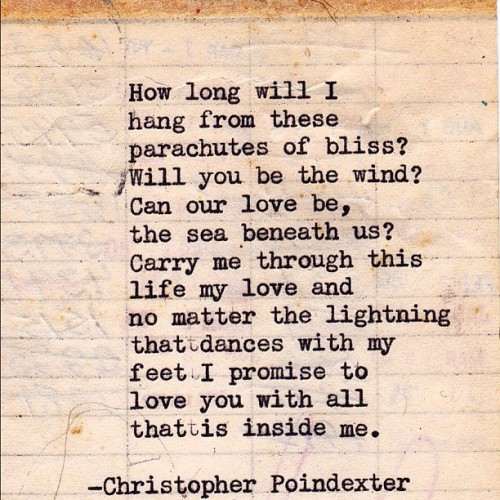Loving Poetry In English Biography
Source(Google.com.pk)
William Wordsworth was an eminent English poet. He was born on April 23rd 1770 in Cockermouth, an old market town in the district of Allerdale in the county of Cumbria in the north west of England. Together with the famous poet Samuel Taylor Coleridge (1772 - 1834), he would launch the Romantic period and school of thought of English literature with their Lyrical Ballads first published in 1798. Wordsworth’s masterpiece, however, would be his largely autobiographical poem entitled The Prelude (1850), which focused on the formative experiences of his youth.
William Wordsworth would be the second of five children. Growing up in the Lake District would influence him greatly because of the unique sense and appreciation for nature he would get there. Sadly Wordsworth would lose his mother in 1778, when he was just eight years of age, and his father only five years later in 1783. As if that was not enough traumatic experiences for the young Wordsworth, he would also find himself momentarily separated from his sister, Dorothy, to whom he had understandably become very attached to.
Wordsworth would manage to publish his first sonnet in 1787 in the London-based European Magazine when he was only seventeen years old. Around that time he would also complete his studies at Cambridge and after that in 1791 he would leave for France because the revolutionary ideology of this country at the time had come to fascinate him. It is at that moment in his life that Wordsworth would fall in love with Annette Vallon, a French woman that would bear his first child whom they would name Caroline. However, largely because of tensions between France and England he would end up moving back to his country of origin the following year. Be that as it may, it is important to note Wordsworth would continue to support them both as much as he could for years to come even though Charles and Annette never actually married. Wordsworth would eventually marry Mary Hutchinson, a friend from childhood, and would have five additional children from that union.
His first two collections of poetry would be published in 1793, five years after his first published poem. They would respectively be entitled An Evening Walk, and, Descriptive Sketches. Both would be strongly influenced by the writing style of the eighteenth century. Not long after this in 1795 Wordsworth would make a fateful meeting, that of Samuel Taylor Coleridge. In spite of, or perhaps even because of their at times stormy relationship, they would manage to collaborate and produce the founding document of the English Romantic movement, published in 1798: the Lyrical Ballads. In 1807, the third edition of what was to become a classic work was supplemented with a long-awaited introduction written by Wordsworth. This opening statement would in fact in turn come to be considered the foundation document of Romantic literary theory. There Wordsworth expounds his vision of a new poetry based on the real everyday language used by human beings, and convincingly defines poetry as a sort of spontaneous overflow of powerful feelings.
The following quote can give us a further indication as to how Wordsworth conceived of poetry:
“Poetry is the breath and finer spirit of all knowledge […] It is as immortal as the heart of man […]”
Having defined what poetry is according to Wordsworth, an interesting question that might almost automatically come to mind is: Who for Wordsworth is the poet? It would appear it is a man who speaks to humans, who conveys to them a special kind of message. In this way, for Wordsworth the poet becomes an exceptional being, gifted with extraordinary sensitivity, with a power of enthusiasm as well as a love and knowledge of human nature. In Wordsworth’s own words in the preface to Lyrical Ballads, the poet is compellingly defined as follows:
“He is a man speaking to men: a man, it is true, endued with more lively sensibility, more enthusiasm and tenderness, who has a greater knowledge of human nature, and a more comprehensive soul, than are supposed to be common among mankind; a man pleased with his own passions and volitions, and who rejoices more than other men in the spirit of life that is in him; delighting to contemplate similar volitions and passions as manifested in the goings-on of the universe, and habitually impelled to create them where he does not find them.”
Eventually Coleridge and Wordsworth would live close to each other in the North of England in the Lake District, which in fact would end up earning them together with Robert Southey, the label of “Lake Poets”. Wordsworth was clearly part of larger circles of contemporary literary figures in England as well. Wordsworth, for instance, would also help in 1807 to found with a few friends The Literary Society, a writer’s London club with members from British literature, but also artists and politicians.
Wordsworth would also have lived in Germany where he would in fact start writing his long autobiographical poem we mentioned above, The Prelude, first entitled Poem to Coleridge. The poem was in fact meant to be a prologue to a much longer philosophical poem he had entitled The Recluse, which was never to be completed. Perhaps more interesting still, although not so surprising given the original title, is the fact that he had initially intended to write it with Coleridge, and to together outperform John Milton’s (1608 - 1674) classic Paradise Lost. Wordsworth would write the first of many revised versions when he was only 28 and would continue to tweak it for the rest of his life without ever actually publishing it during his lifetime. We know that in correspondences with his sister, Dorothy Wordsworth, who became an author in her own right, he would refer to the work as “the poem on the growth of my own mind.” It was eventually published three months after Wordsworth’s death in 1850. His widow, Mary Wordsworth, would publish it with a title she came up with herself: The Prelude. It has since then been acknowledged as Wordsworth’s magnum opus. It is indeed to this day accepted as one of the most successful if not the best autobiography written in verse.
Wordsworth is also celebrated for, amongst others, his Lucy Poems, which are a series of five poems written between 1798 and 1801. Earlier versions of four of them, however, had already been published in the second edition of Lyrical Ballads in 1800. Wordsworth’s goal in this series is as he himself had stated, experimental. He was to attempt to write in as pure as possible English and thus try and touch as much as communicate through prose the high morals of love, beauty, nature, death and longing amongst other ideals.
In 1807 Wordsworth published Poems in Two Volumes, which includes poems entitled: “Resolution and Independence”; “I wandered lonely as a Cloud” (known also as “Daffodils”); “My Heart Leaps Up”; “Ode: Intimations of Immortality”; “Ode to Duty”; “The Solitary Reaper”; “Elegiac Stanzas”; “Composed upon Westminster Bridge, September 3, 1802”; “London, 1802”; and “The World is Too Much with Us”. The complete poetry work of Wordsworth is so big we can only mention a fraction here. It also includes Guide to the Lakes 1810), The Excursion in 1814, Laodamia (1815).
Both Durham University as well as Oxford University would award Wordsworth with the honorary Doctor of Civil Law degree in 1838 and 1839 respectively. The English government would also eventually grant him a pension. When his friend and poet colleague Robert Southey died in 1843, Wordsworth would become the new Poet Laureate in Great Britain, a title he would keep until his death. Yet it is interesting to note that it is an honor he would initially refuse on the grounds of his old age. He ended up accepting, however, when the Prime Minister of the time reassured him as follows: “you shall have nothing required of you”. Wordsworth would thus become the only one with such honor granted to them who did not have any poetry writing duties. Which would in fact turn out to be a good thing because when in 1847 Dora, his daughter, passed away he would stop writing altogether for significant amount of time. Wordsworth would die in 1850 at the age of 80 at Rydal Mount, a house in the Lake District near Ambleside, made famous as the home where he lived and died. The cause of his death would be a re-aggravating case of pleurisy, which is an inflammation that prevents breathing by causing terrible pain when one does so. It is typically the result of pneumonia.
It is interesting to note that the life of both Wordsworth and Coleridge, and in particular their collaboration on the important Lyrical Ballads is at the heart of the film Pandaemonium (2000).
Loving Poetry In English Love Poetry In Urdu Romantic 2 Lines For Wife By Allama Iqbal SMS Pics By Faraz 2014 Images

Loving Poetry In English Love Poetry In Urdu Romantic 2 Lines For Wife By Allama Iqbal SMS Pics By Faraz 2014 Images

Loving Poetry In English Love Poetry In Urdu Romantic 2 Lines For Wife By Allama Iqbal SMS Pics By Faraz 2014 Images

Loving Poetry In English Love Poetry In Urdu Romantic 2 Lines For Wife By Allama Iqbal SMS Pics By Faraz 2014 Images
Loving Poetry In English Love Poetry In Urdu Romantic 2 Lines For Wife By Allama Iqbal SMS Pics By Faraz 2014 Images

Loving Poetry In English Love Poetry In Urdu Romantic 2 Lines For Wife By Allama Iqbal SMS Pics By Faraz 2014 Images
Loving Poetry In English Love Poetry In Urdu Romantic 2 Lines For Wife By Allama Iqbal SMS Pics By Faraz 2014 Images

Loving Poetry In English Love Poetry In Urdu Romantic 2 Lines For Wife By Allama Iqbal SMS Pics By Faraz 2014 Images

Loving Poetry In English Love Poetry In Urdu Romantic 2 Lines For Wife By Allama Iqbal SMS Pics By Faraz 2014 Images

Loving Poetry In English Love Poetry In Urdu Romantic 2 Lines For Wife By Allama Iqbal SMS Pics By Faraz 2014 Images

Loving Poetry In English Love Poetry In Urdu Romantic 2 Lines For Wife By Allama Iqbal SMS Pics By Faraz 2014 Images
No comments:
Post a Comment